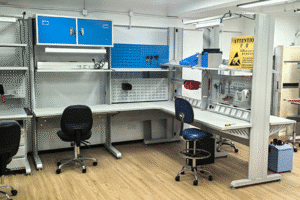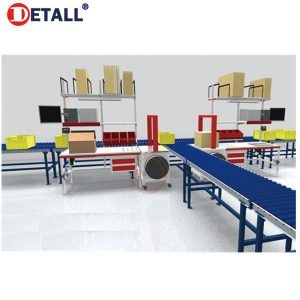What Is the Most Important Element of Effective ESD Control?
Static shocks can ruin electronics in a flash. Poor ESD control costs time and money. Discover the key to protecting sensitive components.
Grounding is the most critical element of ESD control. It safely dissipates static charges, protecting sensitive electronics like ICs from damage.
Want to master ESD protection? I’ll explain why grounding is essential and how to do it right. Keep reading for practical insights.
Why Does Grounding Prevent ESD Damage?
Static buildup is a silent threat to electronics. Without grounding, a single spark can destroy ICs. I’ve seen this ruin projects.
Grounding redirects static charges to earth, preventing damage to sensitive components. Use wrist straps and ESD mats for effective protection.
Grounding is the backbone of ESD control. It neutralizes static before it harms delicate circuits. Early in my career, I watched a batch of microchips fail because of ungrounded tools—heartbreaking and costly. Our factory’s ESD workbenches, compliant with IEC61340-5-1, have built-in grounding points for safety. Here’s how grounding tools help:
| Grounding Tool | Function | Best Practice |
|---|---|---|
| Wrist Straps | Connects worker to ground | Wear tightly, test daily |
| ESD Mats | Dissipates surface static | Place on workbenches, clean often |
| Ground Cords | Links equipment to ground | Check connections, replace if worn |
Test grounding daily with a meter. A solid ground connection ensures static never reaches your electronics, saving you from failures.
Ungrounded workstations are ESD disasters waiting to happen. Static can build up on surfaces, zapping components. Proper setup is critical.
Grounded workstations channel static away from work surfaces. Use conductive materials and grounding cords to protect electronics during assembly.
Workstations are where ICs are most vulnerable. Ungrounded surfaces can hold static charges, ready to strike. I once traced a production issue to a workbench with a loose ground cord—fixed it, and failures stopped. Our modular ESD workbenches, CE-certified, use quick-hang grounding systems for flexibility. Here’s a workstation grounding guide:
| Component | Role | Maintenance Tip |
|---|---|---|
| Conductive Tabletop | Dissipates static | Clean with ESD-safe solution |
| Grounding Cords | Connects bench to ground | Inspect for wear, secure tightly |
| Modular Ground Points | Allows flexible grounding setup | Test all points, ensure contact |
Keep workbenches clutter-free. Regular checks ensure grounding remains effective, protecting your components during handling or assembly.
Can Grounding Alone Protect Sensitive Devices?
Grounding is vital, but is it enough? Relying only on grounding can leave gaps. Complementary measures strengthen your ESD control.
Grounding is essential but works best with humidity control and ESD-safe tools. Together, they create a robust defense against static damage.
Grounding lays the foundation, but it’s not a cure-all. Dry air or ungrounded tools can still cause issues. I learned this when a humidifier failure spiked static issues despite grounding. Our ESD workbenches pair grounding with ergonomic designs for full protection. Here’s how to complement grounding:
| Method | Benefit | Implementation |
|---|---|---|
| Humidity Control | Reduces static buildup | Maintain 40-60% humidity |
| ESD-Safe Tools | Prevents static transfer | Use conductive tweezers, pliers |
| Anti-Static Storage | Shields components | Store ICs in conductive bags |
Monitor humidity and tool conditions. Combining these with grounding creates a fail-safe environment, ensuring your electronics stay safe.
Conclusion
Grounding is the cornerstone of ESD control, preventing static damage. Pair it with proper workstations, tools, and humidity for complete protection.



